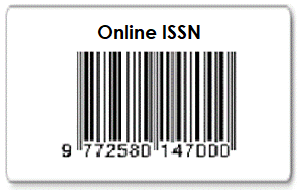Gender Representation in Indonesian EFL Textbooks: A Sociolinguistic Study of “English for Nusantara”
DOI:
https://doi.org/10.32332/joelt.v13i1.10682Keywords:
English for Nusantara, Gender Bias, Gender Representation, Sociolinguistic, Textbook AnalysisAbstract
Gender representation in textbooks has a powerful impact on students’ perceptions and social identities. Unbalanced gender portrayal can influence how students view their roles and opportunities in society. This study aimed to investigate how gender is represented in educational material, English for Nusantara textbook for eighth-grade students. A mixed-method design was employed, combining content analysis and discourse analysis, to examine how often male and female characters are represented in the textbook. Brugeilles and Cromer's (2009) model was employed to inform analysis, focusing on the frequency of activities, roles, and characters' appearances. The findings revealed that male and female characters appear in nearly equal numbers however traditional gender roles are still dominated. Male characters are more frequently depicted in physical, competitive, and public roles, such as workers and rescuers, while female characters are more often shown in domestic, educational, and cultural contexts. These findings suggest that numerical balance does not necessarily indicate gender equality in representation. The study highlights the need for more diverse and equitable representation of both genders in educational materials. It also suggests that future research explores students' perceptions of gender and how teachers address gendered content in classroom settings to support more inclusive English language learning.
References
’Aini, W., Yanto, E. S., & Fitriyana, W. (2021). Gender Representation in The English Textbook for Grade Ninth in Indonesia. INTERACTION: Jurnal Pendidikan Bahasa, 8(2). https://doi.org/10.36232/jurnalpendidikanbahasa.v8i2.1334
Adawiyah, S. Z., & Oktavianti, I. N. (2023). Gender Representation in Merdeka Curriculum ELT Textbooks: A Corpus-assisted Study. Gender Representation in Merdeka Curriculum ELT Textbooks Indonesian Journal of EFL and Linguistics, 8(2).
Azad, M. T. (2020). Gender Representation in Iranian High School Textbook Images. Language Teaching Research Quarterly, 15. https://doi.org/10.32038/ltrq.2020.15.04
Blumberg, R. L. (2008). The invisible obstacle to educational equality: gender bias in textbooks. PROSPECTS, 38(3), 345–361. https://doi.org/10.1007/s11125-009-9086-1
Brugeilles, C., & Cromer, S. (2009). Promoting gender equality through textbooks: a methodological guide. UNESCO. https://unesdoc.unesco.org/ark:/48223/pf0000158897_eng
Butler, J. (1999). Feminism and the Subversion of identity. In Routledge.
Eagly, A. H., & Wood, W. (2012). Social role theory. In Handbook of theories of social psychology, Vol. 2 (pp. 458–476). Sage Publications Ltd. https://doi.org/10.4135/9781446249222.n49
Forum, W. E. (2023). Global Gender Gap Report 2023. In World Economic Forum (Issue June). https://www3.weforum.org/docs/WEF_GGGR_2023.pdf
Iriana, G. J., Mobit, M., & Kamil, A. B. (2024). Investigating Gender Representation In Indonesian English Language Textbook. Jurnal Ilmiah Wahana Pendidikan, Februari, 10(4), 334–349. https://doi.org/10.5281/zenodo.10516583
Krook, M. L., & Mackay, F. (2011). Introduction: Gender, Politics, and Institutions BT - Gender, Politics and Institutions: Towards a Feminist Institutionalism (M. L. Krook & F. Mackay (eds.); pp. 1–20). Palgrave Macmillan UK. https://doi.org/10.1057/9780230303911_1
Lee, J. F. K. (2018). In the pursuit of a gender-equal society: do Japanese EFL textbooks play a role? Journal of Gender Studies, 28(2), 1–14. https://doi.org/10.1080/09589236.2018.1423956
Risager, K. (1998). Critique of textbook criticism. In & E. P. (Eds. . D. Albrechtsen, B. Henriksen, I. M. Mess (Ed.), Perspectives on Foreign and Second Language Pedagogy (pp. 53–62). Syddansk Universitetsforlag.
Sunderland, J. (2000). Issues of language and gender in second and foreign language education. Language Teaching, 33, 203–223. https://doi.org/10.1017/S0261444800015688
Sunderland, J. (2010). Language, Gender and Children’s Fiction. Bloomsbury Publishing CN - PN. http://digital.casalini.it/9781441182982
Suwarno, Triyono, S., Ashadi, & Sahayu, W. (2021). Gender Construction in the Indonesian Government-Distributed English Textbook: Combining Critical Discourse Analysis and Corpus Linguistics. Sexuality and Culture, 25(6). https://doi.org/10.1007/s12119-021-09870-5
UNESCO. (2017). Textbooks pave the way to sustainable development: A review of the content of school textbooks and teacher guides from a gender perspective. https://unesdoc.unesco.org/ark:/48223/pf0000259930
Zahra, R., Inawati, I., & Ariffin, K. (2024). Gender Representation in Indonesian ELT Textbooks: The Hidden Bias. EDUCATUM Journal of Social Sciences, 10(1 SE-Articles), 37–49. https://doi.org/10.37134/ejoss.vol10.1.4.2024
Downloads
Published
Issue
Section
License
Copyright (c) 2025 Chindy Yolanda, Syafryadin

This work is licensed under a Creative Commons Attribution-ShareAlike 4.0 International License.
















